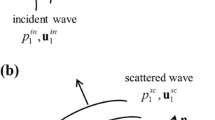First quantitative studies of the effect of electricity on excitable biological tissues forming the basis of the Hoorweg–Weiss–Lapicque law are described. The contribution of each researcher to the discovery is delineated and the practical significance of the Hoorweg–Weiss–Lapicque law is explained.
Similar content being viewed by others
References
Hoorweg, J. L., “Condensatorentladung und Auseinandersetzung mit du Bois-Reymond,” Pflügers Archiv, 52, 87-108 (1892).
Irnich, W., “The fundamental law of electrostimulation and its application to defibrillation,” Pac. Clin. Electrophysiol., 13, No. 11, 1433-1447 (1990).
Weiss, G., “Sur la possibilité de rendre comparables entre eux les appareils servant а l’excitation électrique,” Archives Italiennes de Biologie, 35, 413-446 (1901).
Irnich, W., “Georges Weiss’ fundamental law of electrostimulation is 100 years old,” Pac. Clin. Electrophysiol., 25, No. 2, 245-248 (2002).
Blondel, A., “Oscillographes; nouveaux appareils pour l’étude des oscillations électriques lentes,” Comptes rendus hebdomadaires des séances de l’Académie des sciences, 116, 502-506 (1893).
Lapicque, L., “Recherches quantitatives sur l’excitation électrique des nerfs traitée comme une polarisation,” Journal de physiologie et de pathologie générale, 9, 620-635 (1907).
Brunel, N. and van Rossum, M. C., “Lapicque’s 1907 paper: From frogs to integrate-and-fire,” Biol. Cybern., 97, No. 5, 337-339 (2007).
Blair, H. A., “On the intensity-time relations for stimulation by electric currents. I,” J. Gen. Physiol., 15, 709-729 (1932).
Blair, H. A., “On the intensity-time relations for stimulation by electric currents. II,” J. Gen. Physiol., 15, 731-755 (1932).
Lapicque, L., “Définition expérimentale de l’excitabilité,” Comptes rendus des séances de la Société de biologie et de ses filiales, 67, 280-283 (1909).
Gorbunov, B. B., “A study of the myocardium cell membrane using the Luo−Rudy model,” Biomed. Eng., 46, 117-119 (2012).
Gurvich, N. L. and Yun’ev, G. S., “On recovery of normal activity of fibrillating heart in warm-blooded animals by a capacitor discharge,” Byul. Eksp. Biol. Med., 8, No. 1, 55-58 (1939).
Gurvich, N. L., “The importance of the physical characteristics of capacitor discharge in recovering normal activity of fibrillating heart,” in: Abstracts of Works of Biology Division of the Academy of Sciences of the USSR for 1940, Izd. Akademii Nauk SSSR, Moscow (1941), pp. 375-376.
Author information
Authors and Affiliations
Corresponding author
Additional information
Translated from Meditsinskaya Tekhnika, Vol. 52, No. 5, Sep.-Oct., 2018, pp. 48-50.
Rights and permissions
About this article
Cite this article
Gorbunov, B.B., Vostrikov, V.A., Nesterenko, I.V. et al. A History of the Discovery of the Hoorweg–Weiss–Lapicque Law. Biomed Eng 52, 357–360 (2019). https://doi.org/10.1007/s10527-019-09847-7
Received:
Published:
Issue Date:
DOI: https://doi.org/10.1007/s10527-019-09847-7




